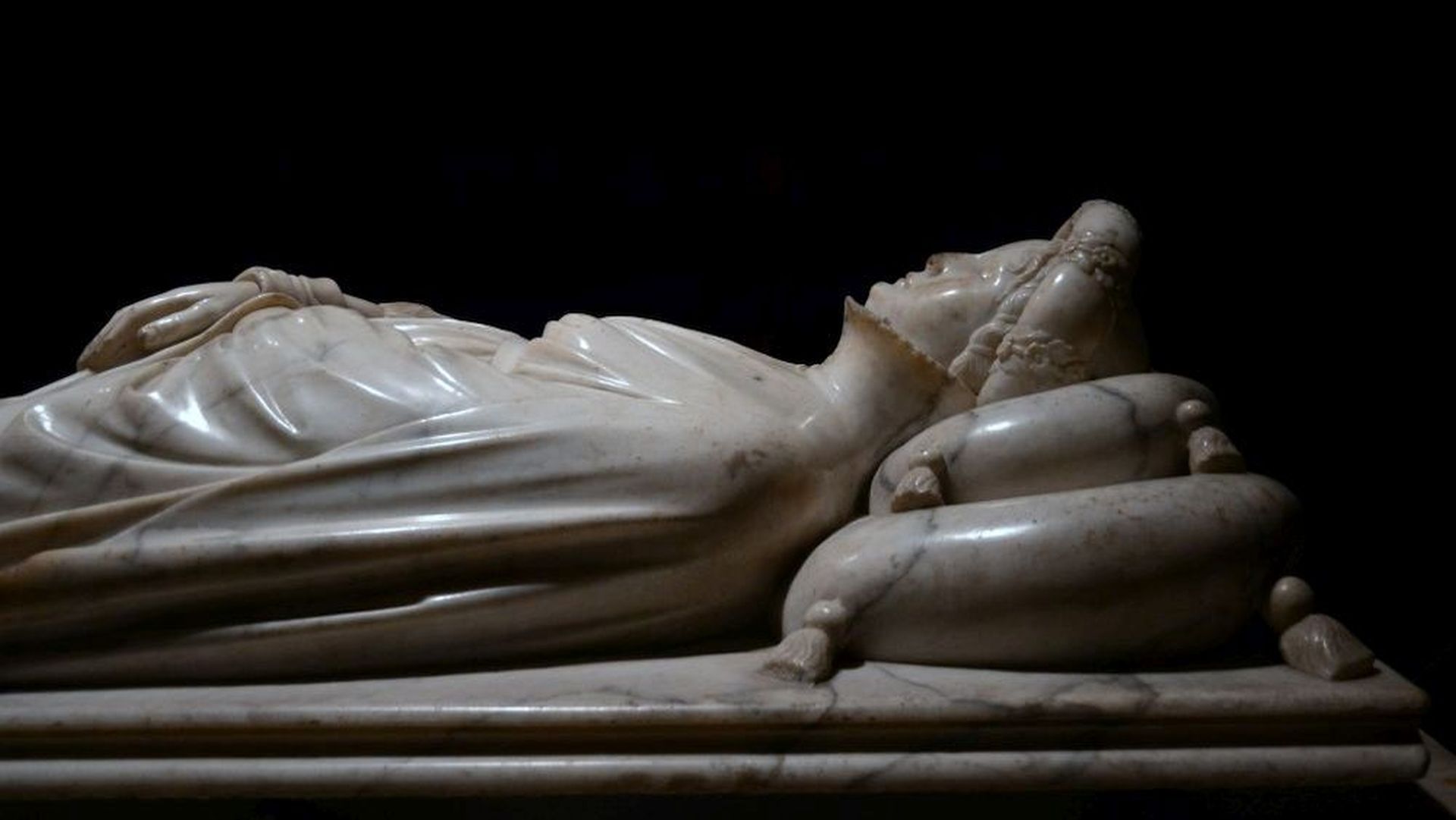Ilaria del Carretto
Ilaria del Carretto è stata la seconda moglie di Paolo Guinigi, signore di Lucca tra il 1400 e il 1430. Dopo la morte prematura della donna (aveva infatti solo 25 anni), il marito commissionò allo scultore Jacopo della Quercia un sarcofago di marmo e pietra, un monumento funebre che richiese allo scultore due interi anni di lavorazione.

indirizzo: Cattedrale di San Martino – Piazza San Martino, Lucca
telefono: 0583 490530
e-mail: info@museocattedralelucca.it
sito web: museocattedralelucca.it
accessibilità: Sono disponibili rampe per persone su sedie a rotelle
orari: variabili durante l’anno, si consiglia di consultare il sito ufficiale
ingresso: è previso un biglietto a pagamento per la chiesa e l’area archeologica.

Il Complesso Museale e Archeologico della Cattedrale di Lucca aderisce a Visit Card Lucca il biglietto cumulativo che consente l’accesso ai principali luoghi d’interesse culturale e attrazioni della città
Ilaria del Carretto è stata la seconda moglie di Paolo Guinigi, signore di Lucca tra il 1400 e il 1430.
Dopo la morte prematura della donna, Paolo commissionò volle per leiun monumento funebre, un sarcofago di marmo e pietra perchè fosse per sempre ricordata e incaricò lo scultore Jacopo della Querciache impiegò due interi anni per realizzarla.
La bella figura di Ilaria giace distesa nel suo letto decorato da putti e festoni, di ispirazione classica. La testa poggiata morbidamente su due cuscini, gli occhi chiusi lievmente, le mani delicatamente appoggiate sul ventre. La veste è raffinata ed elegante, con una foggia particolare, il capo ornato da una corona di stoffa e fiori. Il cane, accoccolato ai suoi piedi, simboleggia la fedeltà coniugale.
L'opera, uno dei massimi capolavori della scultura quattrocentesca, esprime l'epoca di passaggio tra il gusto tardo-gotico del panneggio a pieghe sottili e parallele che disegnano con una linea continua e delicata luci e ombre che fanno emergere le forme del corpo con un atteggiamento già rinascimentale di ascendenza fiorentina del dolce modellato del volto e delle mani, e raffinati giochi di chiaroscuro
"... Jacopo di leccatezza pulitamente il marmo cercò di finire con diligenza infinita", disse di lui Giorgio Vasari.
In origine l'opera era collocata nella cappella Guinigi della Chiesa di San Francesco dove ancora giace la salma e qui rimase fino al 1430, anno in cui Paolo Guinigi venne cacciato dalla città e i suoi beni furono confiscati. Il sarcofago di Ilaria venne spogliato di tutte quelle parti che facevano riferimento al tiranno: la lastra con lo stemma, poi recuperata, e un'iscrizione commemorativa, andata perduta.
Nel 1887, dopo aver subito vari spostamenti, il sarcofago fu ricomposto nel transetto nord della chiesa della Cattedrale di San Martino dove è rimasto fino all'attuale collocazione nella sacrestia della Cattedrale.
